In connection with the Ceratizit Open Days 2019 press event May 13-15, I visited several of the cutting tool manufacturer’s German facilities (in Stuttgart, Balzheim and Kempten), as well as Ceratizit Reutte in Breitenwang, Austria. The Luxembourg-based Ceratizit Group has combined its Ceratizit, Komet, WNT and Klenk brands under the name Team Cutting Tools. Fifty-five people from 15 countries attended the event; I was the only U.S.-based journalist to participate.
One of the highlights of the event was the introduction of High Dynamic Turning with FreeTurn tools, which makes it possible to perform traditional turning operations such as roughing, finishing, contour turning, face turning and longitudinal turning with one tool. The company reports that it has taken advantage of the systematics of milling/turning centers to enable the tool’s lead, or approach, angle and point of contact in the machine to be varied. Instead of the conventional, static position of an insert in a tool body, the milling spindle is employed to produce to the corresponding approach angle to the workpiece. This arrangement create 360° of freedom without the risk of collision and significantly enhances flexibility and chipbreaking.
While at Ceratizit Reutte, I had the opportunity to see demonstrations of the FreeTurn tool being applied to turn an aluminum bicycle hub and a steel shaft. Based on a computer simulation, the company reports that the hub can be produced in 95 seconds using the FreeTurn tool compared to 130 seconds using conventional turning.
I posted a product announcement, with embedded video, and we plan to publish an article about the new turning technology in the August isssue’s Look-Ahead department. In addition, be sure to check out my Lead Angle editorial in our July issue to read more about the company’s innovations, including logistics.
Presented below are some of the photographs that I and the company’s photographer took during the trip.
At the Komet Deutschland facility, a collaborative robot from Universal Robots is used for the cutting edge preparation process, guiding the cutting edge along the brush in six axes. Photo by A. Richter
PCD blanks at cut with a DMG Mori Lasertec 20 linear laser machine at Komet Deutschland. According to the company, edges that are laser-machined extend tool life 20% to 30% compared with grinding them because they are less jagged. Photo by A. Richter
A machinist runs a Reinecker RS 500 CNC grinding machine at Komet Deutschland. Photo by A. Richter
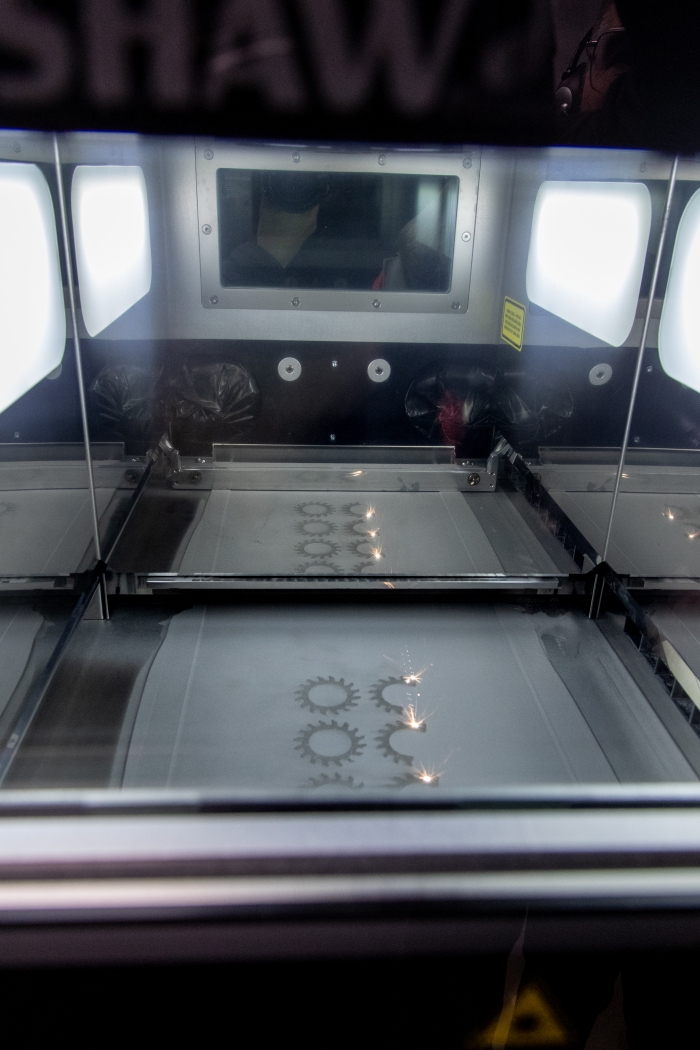
The Komet Deutschland plant has a Renishaw RenAM 500Q laser melting machine to produce cutting tools and other components via additive manufacturing. Photo courtesy of Ceratizit Group
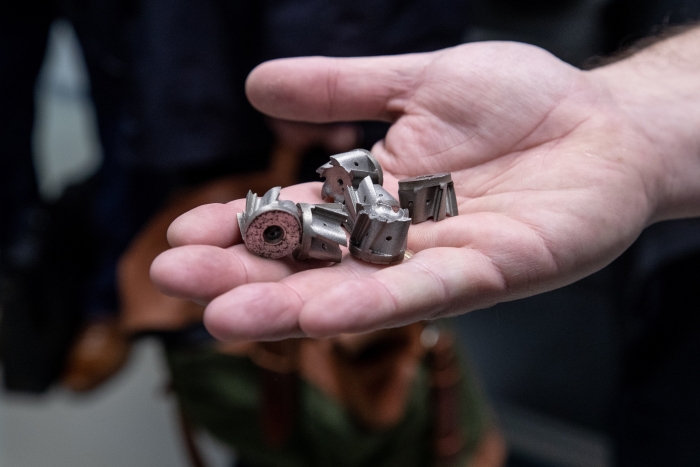
A selection of 3D-printed parts for PCD facemills. Photo courtesy of Ceratizit Group
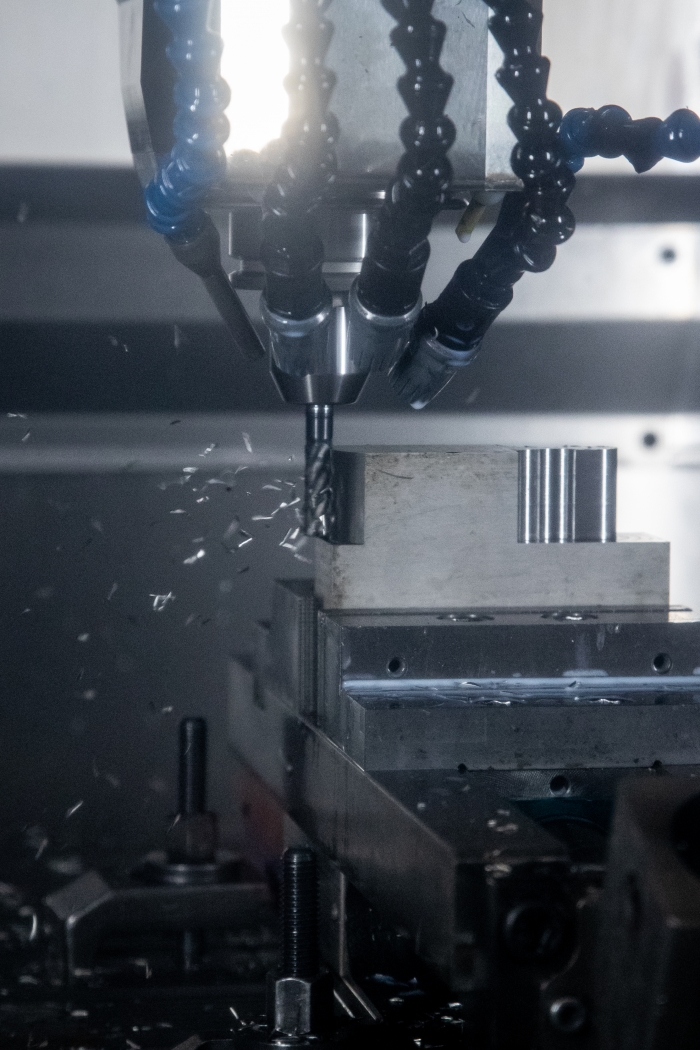
At Ceratizit Balzheim's R&D center, trochoidal milling is performed on a 5-axis Hermle C 42 machining center to achieve higher machining parameters than conventional milling when cutting a TiAl6V4 workpiece for an aerospace application. Photo courtesy of Ceratizit Group
The Ceratizit Kempten logistics center began operation in 2011 and enables the company to deliver cutting tools around the globe within three days. The company plans to have a new center in operation by 2021 that maximizes automation. Photo by A. Richter
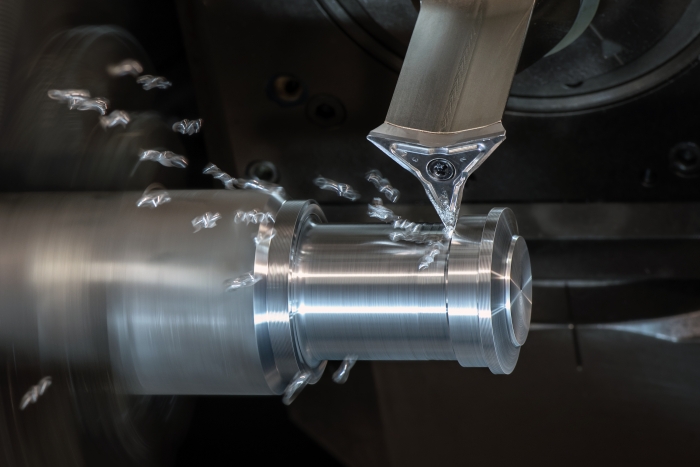
High Dynamic Turning with FreeTurn tools enables the lead angle to be changed during machining and 40% higher feed rates, according to the company. Photo courtesy of Ceratizit Group
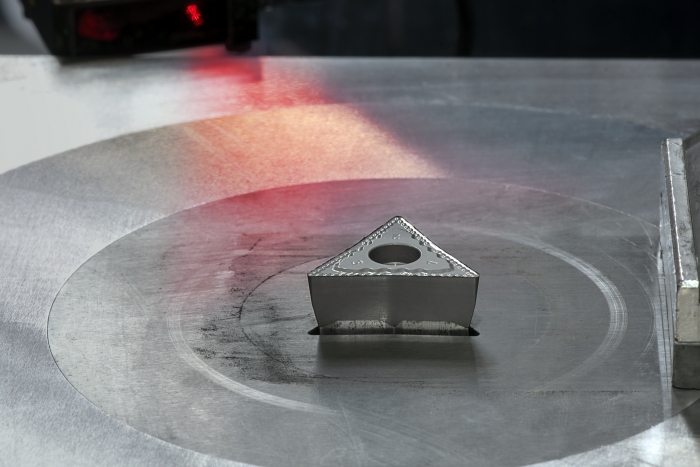
An insert is pressed during the production process at Ceratizit Reutte. Photo courtesy of Ceratizit Group
Maria del Rey, quality technician for Ajalvir, Spain-based EDR System SA, poses with a bike riden by Kirsten Wild, a member of Team WNT-Rotor Pro Cycling and four-time world champion. Maria is also the daughter of Enrique del Rey, founder of EDR System, which CNC machines parts for the bike. Photo by A. Richter
Dr. Uwe Schleinkofer, head of R&D cutting tools for Ceratizit Austria GmbH, answers a question about High Dynamic Turning during a Q&A session with (left to right) Gerhard Bailom, managing director of Ceratizit Deutschland GmbH, Thierry Wolter, Ceratizit Group board member, and Claude Sun, managing director of Ceratizit Deutschland. Photo by A. Richter
An overview of Ceratizit Reutte. Photo by A. Richter
Related Glossary Terms
- approach angle
approach angle
Angle between the insert’s side-cutting edge and the line perpendicular to the milling cutter’s axis of rotation. Approach angle, which is also known as cutting edge angle, is used with metric units of measurement. See lead angle.
- centers
centers
Cone-shaped pins that support a workpiece by one or two ends during machining. The centers fit into holes drilled in the workpiece ends. Centers that turn with the workpiece are called “live” centers; those that do not are called “dead” centers.
- computer numerical control ( CNC)
computer numerical control ( CNC)
Microprocessor-based controller dedicated to a machine tool that permits the creation or modification of parts. Programmed numerical control activates the machine’s servos and spindle drives and controls the various machining operations. See DNC, direct numerical control; NC, numerical control.
- conventional milling ( up milling)
conventional milling ( up milling)
Cutter rotation is opposite that of the feed at the point of contact. Chips are cut at minimal thickness at the initial engagement of the cutter’s teeth with the workpiece and increase to a maximum thickness at the end of engagement. See climb milling.
- edge preparation
edge preparation
Conditioning of the cutting edge, such as a honing or chamfering, to make it stronger and less susceptible to chipping. A chamfer is a bevel on the tool’s cutting edge; the angle is measured from the cutting face downward and generally varies from 25° to 45°. Honing is the process of rounding or blunting the cutting edge with abrasives, either manually or mechanically.
- feed
feed
Rate of change of position of the tool as a whole, relative to the workpiece while cutting.
- gang cutting ( milling)
gang cutting ( milling)
Machining with several cutters mounted on a single arbor, generally for simultaneous cutting.
- grinding
grinding
Machining operation in which material is removed from the workpiece by a powered abrasive wheel, stone, belt, paste, sheet, compound, slurry, etc. Takes various forms: surface grinding (creates flat and/or squared surfaces); cylindrical grinding (for external cylindrical and tapered shapes, fillets, undercuts, etc.); centerless grinding; chamfering; thread and form grinding; tool and cutter grinding; offhand grinding; lapping and polishing (grinding with extremely fine grits to create ultrasmooth surfaces); honing; and disc grinding.
- grinding machine
grinding machine
Powers a grinding wheel or other abrasive tool for the purpose of removing metal and finishing workpieces to close tolerances. Provides smooth, square, parallel and accurate workpiece surfaces. When ultrasmooth surfaces and finishes on the order of microns are required, lapping and honing machines (precision grinders that run abrasives with extremely fine, uniform grits) are used. In its “finishing” role, the grinder is perhaps the most widely used machine tool. Various styles are available: bench and pedestal grinders for sharpening lathe bits and drills; surface grinders for producing square, parallel, smooth and accurate parts; cylindrical and centerless grinders; center-hole grinders; form grinders; facemill and endmill grinders; gear-cutting grinders; jig grinders; abrasive belt (backstand, swing-frame, belt-roll) grinders; tool and cutter grinders for sharpening and resharpening cutting tools; carbide grinders; hand-held die grinders; and abrasive cutoff saws.
- lead angle
lead angle
Angle between the side-cutting edge and the projected side of the tool shank or holder, which leads the cutting tool into the workpiece.
- look-ahead
look-ahead
CNC feature that evaluates many data blocks ahead of the cutting tool’s location to adjust the machining parameters to prevent gouges. This occurs when the feed rate is too high to stop the cutting tool within the required distance, resulting in an overshoot of the tool’s projected path. Ideally, look-ahead should be dynamic, varying the distance and number of program blocks based on the part profile and the desired feed rate.
- machining center
machining center
CNC machine tool capable of drilling, reaming, tapping, milling and boring. Normally comes with an automatic toolchanger. See automatic toolchanger.
- milling
milling
Machining operation in which metal or other material is removed by applying power to a rotating cutter. In vertical milling, the cutting tool is mounted vertically on the spindle. In horizontal milling, the cutting tool is mounted horizontally, either directly on the spindle or on an arbor. Horizontal milling is further broken down into conventional milling, where the cutter rotates opposite the direction of feed, or “up” into the workpiece; and climb milling, where the cutter rotates in the direction of feed, or “down” into the workpiece. Milling operations include plane or surface milling, endmilling, facemilling, angle milling, form milling and profiling.
- polycrystalline diamond ( PCD)
polycrystalline diamond ( PCD)
Cutting tool material consisting of natural or synthetic diamond crystals bonded together under high pressure at elevated temperatures. PCD is available as a tip brazed to a carbide insert carrier. Used for machining nonferrous alloys and nonmetallic materials at high cutting speeds.
- turning
turning
Workpiece is held in a chuck, mounted on a face plate or secured between centers and rotated while a cutting tool, normally a single-point tool, is fed into it along its periphery or across its end or face. Takes the form of straight turning (cutting along the periphery of the workpiece); taper turning (creating a taper); step turning (turning different-size diameters on the same work); chamfering (beveling an edge or shoulder); facing (cutting on an end); turning threads (usually external but can be internal); roughing (high-volume metal removal); and finishing (final light cuts). Performed on lathes, turning centers, chucking machines, automatic screw machines and similar machines.

